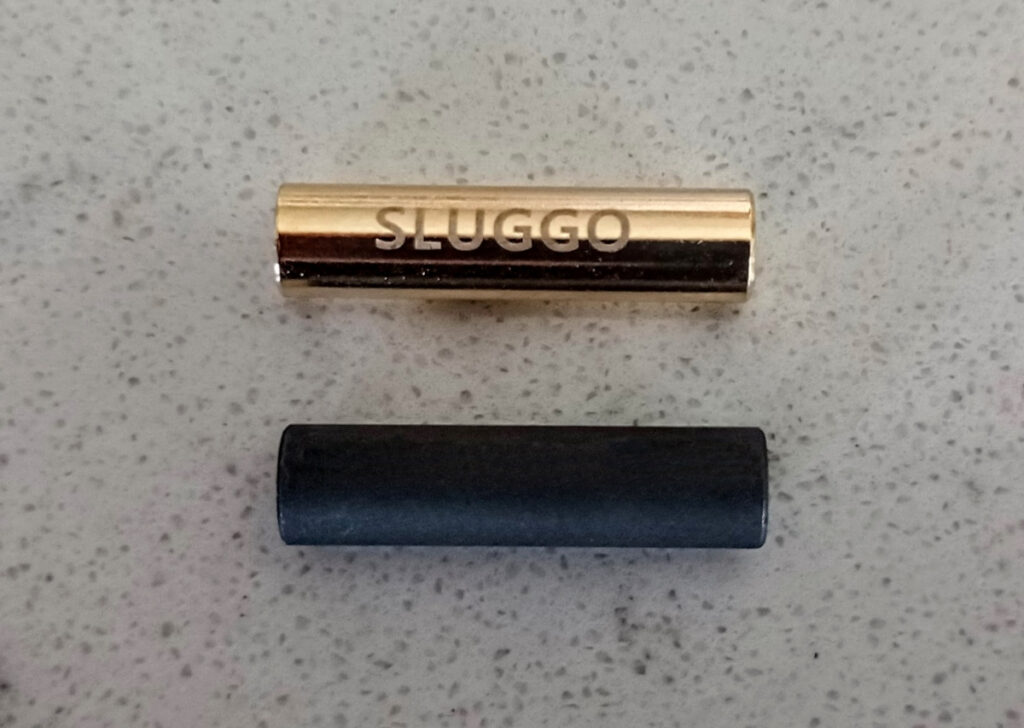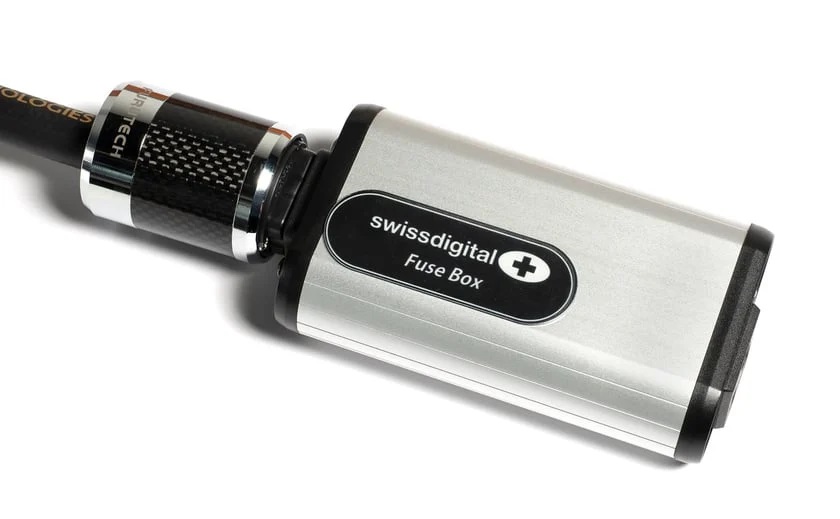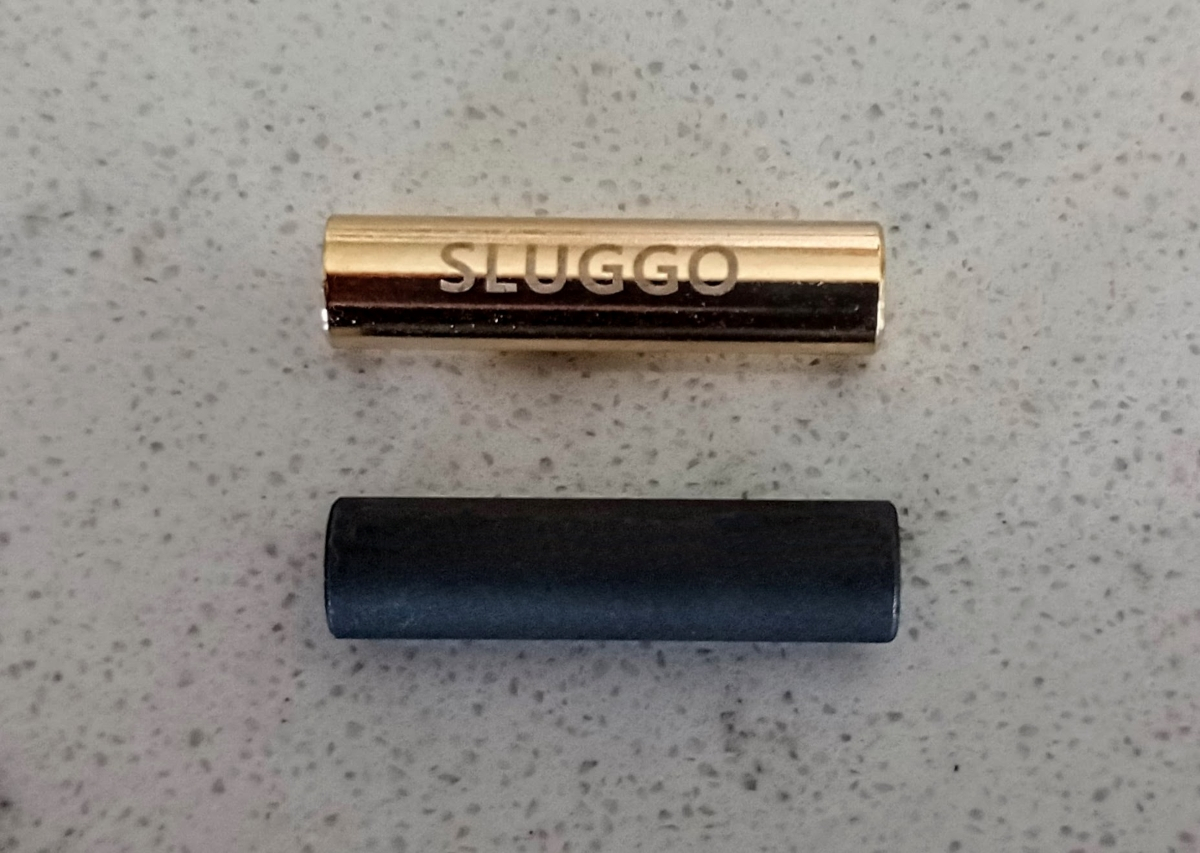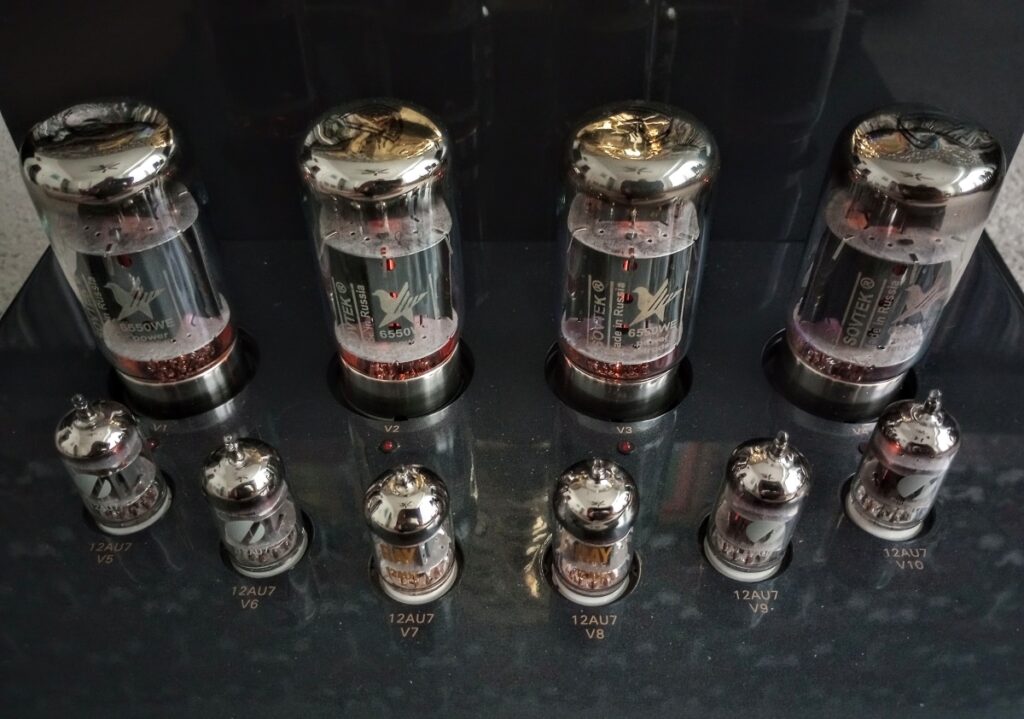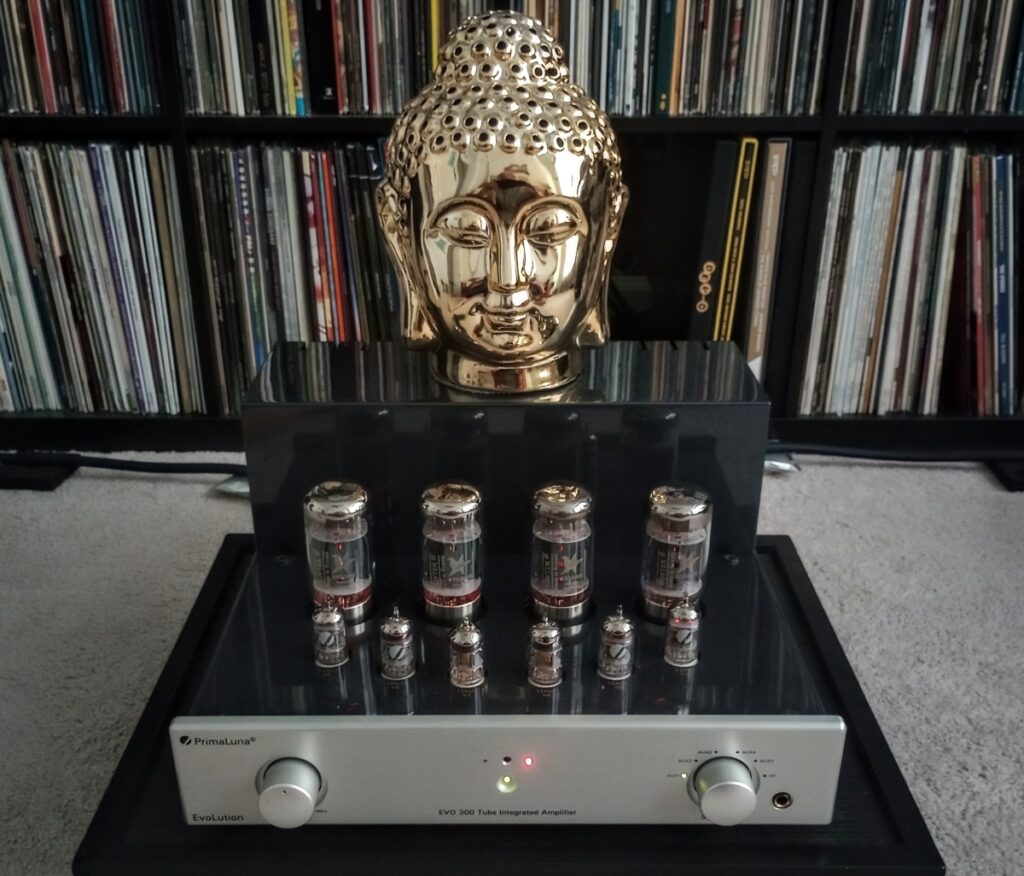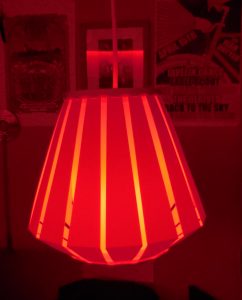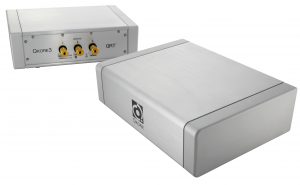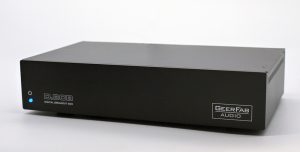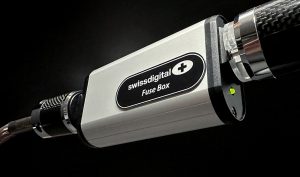As I stated in my original review, the primary function of Vera-Fi Audio's Swiss Digital Fuse Box (SDFB) is to remove and replace the weakest link that existed in the device it's connected to. Which in my case was the main AC line fuse in my PrimaLuna EVO 300 tube integrated amplifier's power supply. Other than that, the SDFB doesn't perform any kind of mystical function; it just sits there, monitoring the AC current flowing to your amplifier. Nothing in its action innately increases the inherent performance capabilities of the PrimaLuna EVO 300; it takes the place of the fuse, plain and simple. And I'm not hearing anything now from the EVO 300 that wasn't designed into its original build. It's been in my system for over four years now, I listen to it on an almost daily basis, and it's a very good tube amplifier. But by eliminating a $2 generic fuse and replacing it with the Swiss Digital Fuse Box, I'm now finally hearing the EVO 300 perform at its absolute peak for the very first time ever—and it's now become an exceptional tube amplifier! And to restate the obvious, the SDFB doesn't provide a magic jolt that supercharges the EVO 300—it simply removed the one obstacle that prevented it from performing as it was designed to. What totally boggles me is that I never knew until now that the EVO 300 was capable of this elevated level of performance!
Of course, there is an element of the Swiss Digital Fuse Box setup that does provide the magic jolt. It's the secret weapon in the SDFB's arsenal: the high purity metal rod that Mark Schifter of Vera-Fi calls the "Sluggo," which allows for what is essentially a direct connection of the EVO 300 to the AC mains. And as of this writing, Sluggos are now available in five different choices of base metal and premium coatings, each with unique sound properties to allow for personal preferences and insure compatibility with a variety of equipment.
To recap from my original review: the Swiss Digital Fuse Box was pre-programmed to match the AC requirements and fuse specifications of the EVO 300 amplifier, and was inserted inline with the EVO 300's AC power cord. The AC line fuse was then replaced with a solid metal rod of matching dimensions that Vera-Fi calls the "Sluggo." Upon powering on the amplifier, the microprocessor contained within the SDFB took over and provided the protection that would otherwise have been left to the lowly fuse, which typically costs a couple of bucks or so. And in comparison to the $4695 MSRP of the EVO 300 amplifier the SDFB was connected to, that $2 fuse is most definitely the weakest link. And of course, it's important to also take into consideration that the diameter of the protective filament of the fuse—which is fairly microscopic—seriously chokes the flow of AC current from the mains to the EVO 300 amplifier, theoretically limiting its ability to perform at its peak. The Sluggo that replaced the fuse is designed to correct for that shortcoming, and provides a conduit for unhindered AC current to flow to the EVO 300's power supply. That greatly enhanced the ability of the EVO300 to perform at a much higher level of proficiency. The word I actually chose to ultimately describe the level of performance provided by the EVO 300 with the Swiss Digital Fuse Box in place was unrestrained; if you haven't read my original review, you can check it out HERE.
Vera-Fi Audio offers choices for the Sluggo of base metal options and with a premium coating upgrade. You can order your Swiss Digital Fuse Box with a Sluggo made from high purity brass, high purity copper, or for a slight upcharge, high purity copper with a gold immersion, which Vera-Fi calls their "Super Sluggo." And apparently, Vera-Fi has just added the Rhodium plated Super-Duper Sluggo to the line-up. The Super Sluggo was provided to me with the SDFB I evaluated, but at the point I was ready to post my original review, Mark Schifter of Vera-Fi had already messaged me to let me know that a newer, premium Sluggo option had become available. One with a vacuum deposited Graphene coating, and it was also already on its way to me. I'd had some prior experience with graphene used in audio applications, and I found the prospect of getting a Graphene Sluggo exciting, to say the least. Mark had already expressed to me that my experience with the SDFB with the gold Super Sluggo would have me crossing the Rubicon, but with the Graphene Sluggo, I should prepare to have my mind blown!
What Exactly is Graphene, and Why Should It Make any Difference?
For those of you who are unfamiliar with Graphene: It's an allotrope of carbon, and is most often represented as a single layer of carbon atoms, tightly bound in a hexagonal honeycomb array. At one atom thick, Graphene is the thinnest and lightest compound known to man; add multiple layers of Graphene and it becomes Graphite. It's also the strongest compound currently known, and has a tensile strength that's 100-300 times that of steel. Graphene is also the best electrical conductor that currently (pun intended!) exists; its conductivity is 1000 times greater than that of copper. Because carbon is the fourth most abundant element in the universe, Graphene should present an eco-friendly, sustainable solution for an almost limitless number of applications. That said, initially harvesting Graphene was a difficult and expensive process that involved the excessive use of toxic chemicals. That process has become significantly streamlined, especially over the last twenty years, and applications for the use of Graphene have exploded, particularly in the area of electronics, and especially in equipment that requires improved signal flow, energy storage, and energy generation.
Graphene is immune to moisture and corrosion, and paints and other coatings that contain Graphene are being used in equipment and on surfaces that might be subject to moisture or harsh environments. Due to its tensile strength, Graphene is being tested as a replacement for Kevlar, as well as in a variety of building materials. Sports equipment manufacturer Head is using Graphene in the production of tennis racquets, and Samsung uses Graphene in mobile phone and video touchscreen applications—it's virtually unbreakable. Most microchip technologies currently use silicon, but the use of Graphene as a replacement for silicon is in the developmental stages, and could revolutionize the microchip industry, as well as all associated technologies that employ microchips—which is just about everything in our current environment. Graphene is even being used in the production of light bulbs, and could soon become a longer-lasting and more durable replacement that will supplant LEDs in the near future.
I've had some experience in the past with Graphene-enhanced audio products, like those from Bill Stierhout's ADD-Powr. I evaluated both their Sorcer X2 and ElectraClear EAU4 harmonic resonators in my digital and analog systems; all electrical connections within the ADD-Powr devices were coated with Graphene to improve their signal-flow efficiency and effectiveness. Nordost bought ADD-Powr's patents for harmonic resonance technology, and they use it and Graphene in their QRT line; other exotic manufacturers like Synergistic Research also use Graphene throughout their product lines. ADD-Powr's products are not the sort where the contribution of Graphene to the effect is easily identifiable, but I enjoyed the benefits provided by the ElectraClear EAU4 devices so much that I kept them in my system.
The Graphene Sluggo Arrives, Offering Unlimited Potential for Unrestrained Performance!
As this review goes live, the Graphene Sluggo option should be available for order on Vera-Fi Audio's website. The Graphene Sluggo takes the high purity copper Sluggo and coats it with a vacuum deposited layer of Graphene. The size of your fuse will determine the cost of the Graphene Sluggo; if your fuse is of the 5 x 20mm variety, choosing the Graphene option will add $199 to the price of the Swiss Digital Fuse Box. If your fuse is of the 6 x 32mm variety, you'll need to add $299 to the price. If you're a current SDFB owner and would like to upgrade to the Graphene option, you'll be able to order one for 20 percent off the listed prices.
Vera-Fi's package showed up rather late in the day; I'd had a particularly vigorous afternoon of play with my two grandsons, along with a grueling hour-long drive home due to traffic, and decided to veg on the sofa for the evening. The Graphene Sluggo was exceptionally well-packed; because of the Sluggo's diminutive size, the package could probably have been trampled by an elephant and wouldn't have suffered any damage. The black Graphene Sluggo features the same high-purity copper base metal found in each copper-based Sluggo variant, but was rather dull looking when compared to the shiny gold-immersed Super Sluggo it was replacing. But as the saying goes, all that glitters is not gold!
Having already gone through the "drill of uncertainty" with the original Swiss Digital Fuse Box, I was now a seasoned professional, and had no qualms about the installation/reconnection process the following morning. The following morning, I simply unplugged the Piggy Tail from the AudioQuest Niagara 1200 unit, removed the Super Sluggo from the rear of the PrimaLuna EVO 300, then inserted the new Graphene Sluggo. Plugging in the Piggy Tail sent the SDFB's LED display into its setup routine; when it reached its operational stage and the light glowed green continuously, I flipped on the power switch to the EVO 300. No problems whatsoever, although I did have "The Conversation" with my wife, daughter, and son-in-law. That should I suddenly check out for some unknown reason, there's a very specific process with regard to the SDFB connected to the nearly $4700 EVO 300 amplifier, and you don't want to fry the amp or burn the house down!
There's a fundamental of Alternating Current electricity theory that has significance for any Sluggo used with the Swiss Digital Fuse Box, but especially so for the Graphene Sluggo. Virtually all electric current in residential and commercial buildings flows through wiring with solid core conductors. Here's where you probably ask "Okay, so if Graphene is the best electrical conductor known to man, why would a layer a single molecule thick applied to a solid core copper rod have any impact on current flow?" Since we're dealing with AC, or alternating current, the electromagnetic property known as skin effect needs to be taken into account. What that translates into is with alternating current, the highest level of current density tends to collect near the surface of a conductor, or its outer skin, and decreases exponentially within the center of the conductor. It depends upon the frequency of the AC current, but the higher the frequency, the more densely the current flows across the surface of the conductor. The mass of the surface area of any Sluggo Vera-Fi uses in the SDFB is significantly larger than that of the fuse filament it's replacing. But with Graphene offering conductivity that's 1000 times greater than copper, that microscopically thin layer of Graphene on the Sluggo is more than enough to supercharge the skin effect current flow from the AC mains to the connected equipment. And constant current flow is key to elevated equipment performance.
Evaluating the Graphene Sluggo in My Analog System
By clicking my name in the header, you can see the components in my dual audio systems. Of course, the all-analog system has been recently revamped with a new pair of standmount compact monitor loudspeakers, the Vanguard Scouts, which are in the same vein as classic British monitor designs like the LS3/5A's, and are running in tandem with a Caldera 10 subwoofer. That setup also incorporates the excellent PS Audio Stellar phono preamp, and as usual, playback of the LPs was handled by my ProJect Classic EVO turntable that's mounted with an Ortofon Quintet Bronze MC cartridge. Of course, the star of the analog system is my recently upgraded PrimaLuna EVO 300 tube integrated amplifier, which now features a matched quad of premium Sovtek 6550 power tubes and a matched pair of NOS vintage Brimar 12AU7 input tubes. And the EVO 300 amplifier is connected to this review's supercharger, the Swiss Digital Fuse Box, now with the Graphene Sluggo.
Because I have such a lengthy history with this record—and because I used it as part of the initial evaluation in my original review of the Swiss Digital Fuse Box—I again put on Impex Records' 1STEP 45 rpm LP reissue of Patricia Barber's Nightclub. It's such a well-recorded and natural-sounding album and I know it so very well—listening for baseline differences in the sound between the Super Sluggo versus the Graphene Sluggo in the SDFB should be a snap, right?
Whoah! With the Graphene Sluggo in place, I immediately noticed a deeper, blacker background and an improved spatial relationship between the players, which were more well defined in the soundstage. Patricia Barber's voice possessed a more impressive level of realism and presence, such that I felt I could nearly reach out and touch her! The Vanguard Scout/Caldera 10 combo seemed to play not only with a greater sense of ease, but with more control from the PrimaLuna amp. Especially in the bass and mid-bass registers, where this album can give certain loudspeakers some level of difficulty. As I noted in my original review, the side three opener, "Autumn Leaves," features some astonishing acoustic bass work from Marc Johnson. And if there's an area where the Vanguard Scouts may seem a bit out of their league, it's instances like this, where their smallish woofers could easily be overdriven by the massive mid-bass transients from Johnson's bass. The extra level of control imparted by the now supercharged PrimaLuna allowed the Scouts to play through the difficult passages without so much as a whimper or spurious vibration.
Side four of the two-LP set is my favorite, and the final track, which is Barber's version of the classic "Wild Is The Wind" was offered with a greater degree of nuance and delicacy with the Graphene Sluggo in place. Marc Johnson's intricate plucked and strummed bass solo at the song's mid section was staggeringly good, and I was astonished by the improved level of realism I was now hearing. I've always felt that I could localize the position of the players in this recording very well, but this took it to another level entirely! Even though I'm listening in the all-analog room in a near-field setup with the Scout/Caldera combo, I could lean into the music and visualize Marc Johnson's fingers on the strings with a degree of tactile realism I'd never have believed possible. The background was blacker and the soundstage was deeper—even though I've been listening to the Scout/Caldera setup for months now, it was almost as if I were listening on a much more expensive, more resolving system! I'm incredibly impressed, especially after the shock of first hearing the Swiss Digital Fuse Box inline with the PrimaLuna—I wouldn't have expected such an additional increase in clarity and transparency was possible from the addition of the Graphene Sluggo.
About the time the Graphene Sluggo showed up for the Swiss Digital Fuse Box, I'd gotten in a couple of new albums from the excellent Rhino High Fidelity Premium LP Series, Black Sabbath's eponymous debut Black Sabbath and Devo's third studio album, Freedom of Choice. You can read those reviews HERE if you like. Even though I have multiple copies of these albums scattered across analog and digital platforms, they've never sounded so very good as through these new LPs playing through the now supercharged PrimaLuna EVO 300 in combo with the SDFB. In Black Sabbath's opening track, "Black Sabbath," Tony Iommi's searing guitar work in the main theme was reproduced by the Scout/Caldera combo with power and authority and shocked me with its realism. This album was recorded on a shoestring budget, and Sabbath was given 12 hours of studio time to record their first LP, so they basically played their then live set, live in the studio and with very few overdubs. The PrimaLuna EVO 300 exerted such a degree of control over the Vanguard Scouts that even when Iommi totally shreds during "A Bit of Finger/Sleeping Village/Warning," the small loudspeakers screamed for more, even though throughout the tune's duration, I thought perhaps their tweeters might fry! Needless to say, this LP has been in heavy rotation for the last week or so.
Side one of Devo's Freedom of Choice is perhaps the most fully-formed album side of any of their studio releases. And comes at you non-stop with a barrage of heavy hits, like "Girl You Want," "Whip It," "Snowball," and "Freedom of Choice." The Vanguard Scouts were again so very controlled by the Graphene Sluggo'd EVO 300, I had to crank the volume and get up and dance! When "Whip It" hit the airwaves, even my normally restrained wife Beth got up and hit the floor as well! The Scouts never flinched, even though Freedom of Choice pounds out some of the most dynamic and well recorded synth-pop of the eighties, or any era, for that matter, with deep bass and intense transients that will challenge many loudspeakers, much less the smallish Scouts. The now reborn EVO 300 handled them with a level of control and finesse that allowed them to really sing, and at any volume level. This is an excellent LP, a superb choice for the Rhino High Fidelity Premium Series, and it really shines when powered by the PrimaLuna EVO 300 with the Graphene Sluggo'd SDFB in the chain.
I also played another excellent Impex Records' LP reissue, Jennifer Warnes The Hunter. This album contains massive synth and bass transients that come at you right from the first needle drop. The opening track, "Rock You Gently," hits you with a barrage of bass and percussion that many loudspeakers of a higher pedigree can't handle easily, and the Scouts just loped along effortlessly. Then "Somewhere, Somebody" comes at you with a walking bass line that will distort my Magneplanars every time, but again, the control that the Graphene Sluggo in the SDFB imparts to the EVO 300 allowed the Scouts to handle this torture track without any issues. It's official: my mind is blown by the Graphene Sluggo!
Final Impressions
The use of Graphene in the latest iteration of Vera-Fi Audio's new Sluggo for the Swiss Digital Fuse Box allows for a substantial leap forward in overall performance. One of the key points I used in my original review was that the Swiss Digital Fuse Box allowed my PrimaLuna EVO 300 to perform in a more unrestrained manner; now with the Graphene Sluggo in place, there are NO RESTRAINTS—the EVO 300 has now become a supercharged version of a really good amp. I'm hearing more of everything that matters during music playback: richer, more lyrical musicality, increased dynamics, a broader, deeper soundstage, with improved clarity and transparency, and a more controlled presentation from the Vanguard Scout loudspeakers. My music now emerges from a more ghostly silent and blacker background. Which allows me to hear fine details and shading in performances that were previously obscured prior to the arrival of the SDFB, and especially now that the Graphene Sluggo is part of the playback chain.
The Swiss Digital Fuse Box with the Graphene Sluggo comes very highly recommended! Don't hesitate to add it to your cart; the paltry extra few hundred dollars for the Graphene Sluggo will be some of the best money you've ever thrown at your audio system. Get your credit card ready!
First time around with the Swiss Digital Fuse Box, I only thought my mind was blown!
Swiss Digital Fuse Box
Retail: $494 MSRP with Core Power Piggy Tail.
Graphene Sluggo for the Swiss Digital Fuse Box
Retail: $199 MSRP for 5 x 20mm Sluggo. $299 for 6 x 32mm Sluggo.
Vera-Fi offers a 20% discount to SDFB owners to upgrade to the Graphene Sluggo.
Vera-Fi Audio LLC
All photos courtesy of Vera-Fi Audio LLC and the author. Graphene photo courtesy of WikiCommons and AlexanderAIUS.




